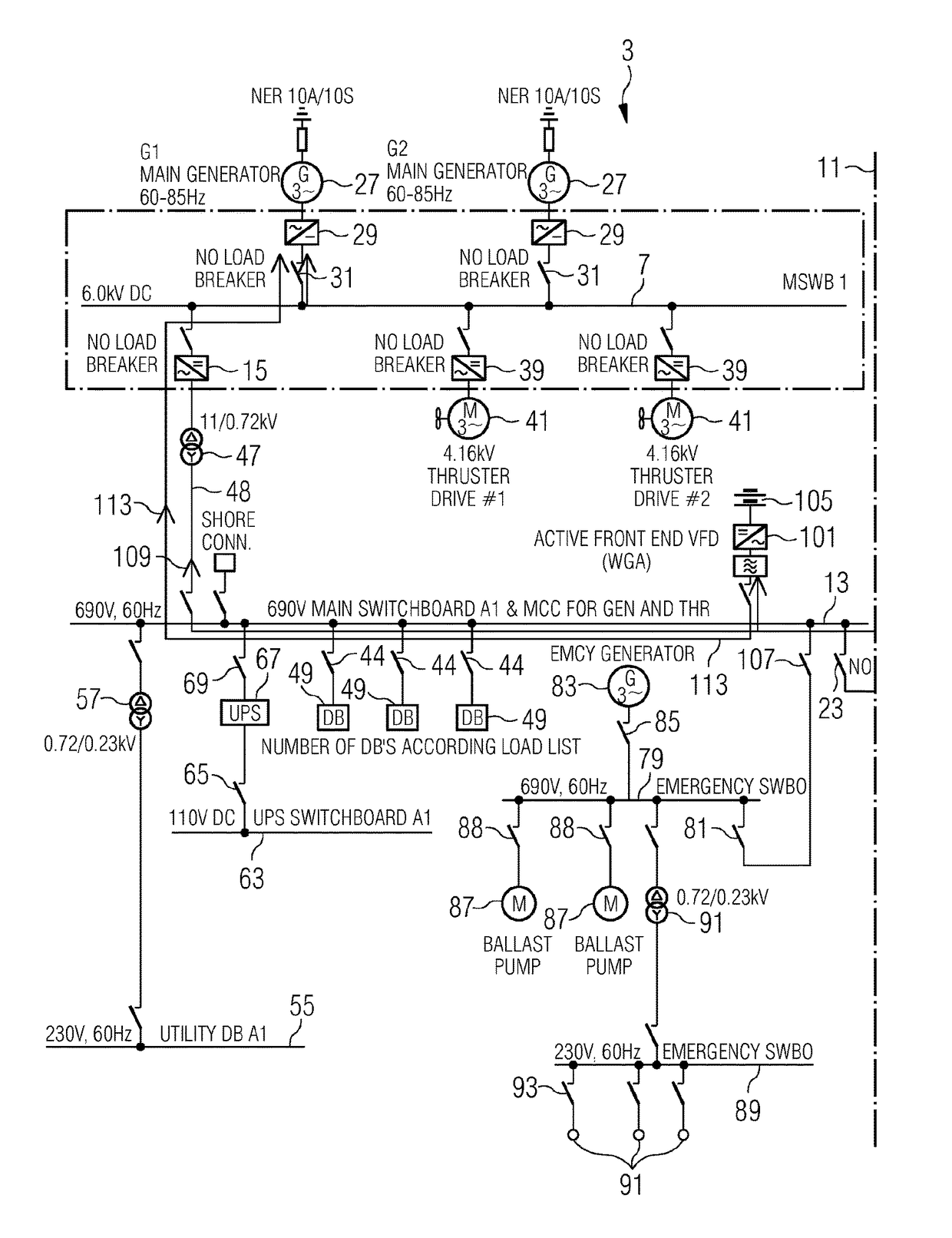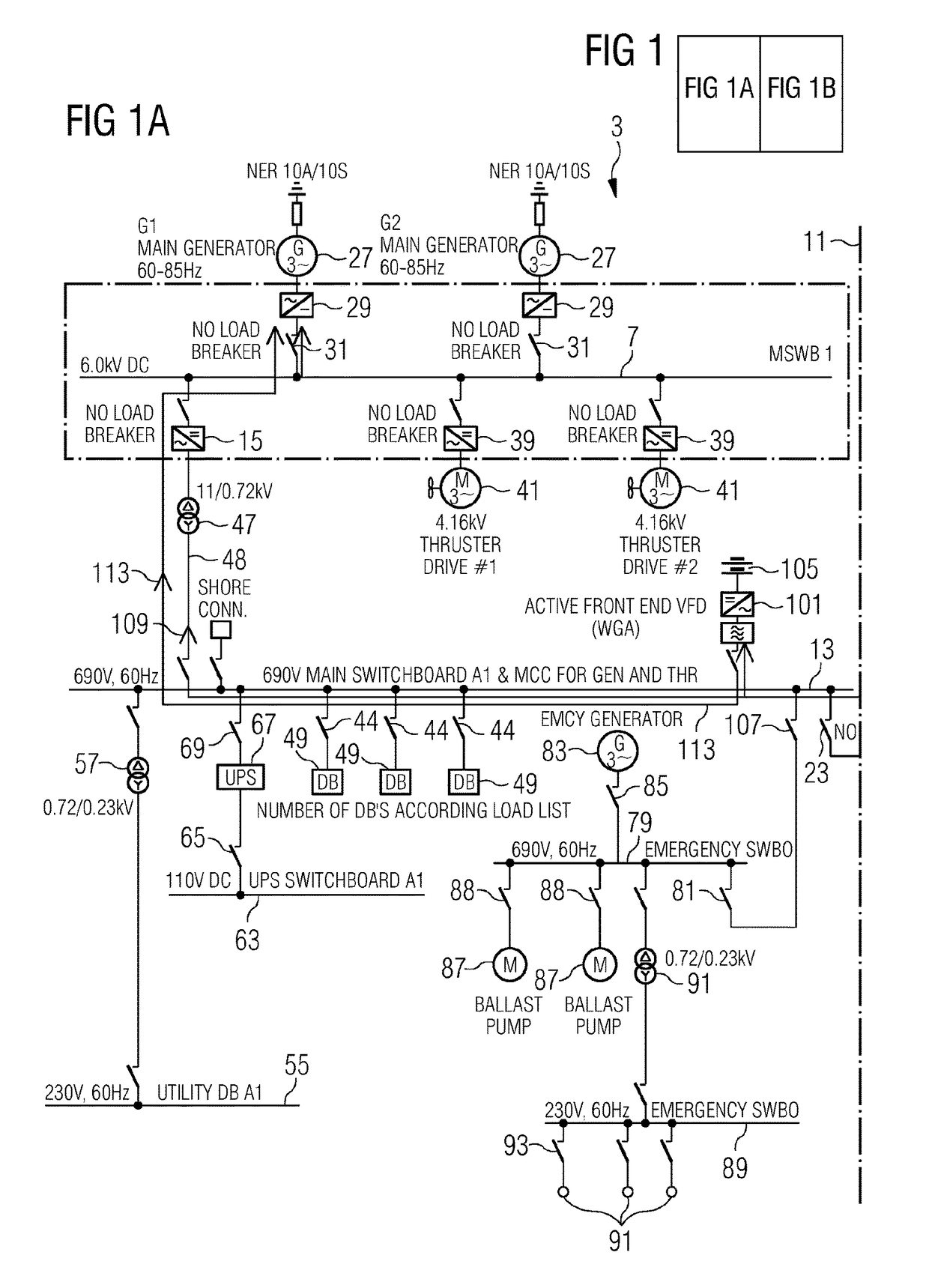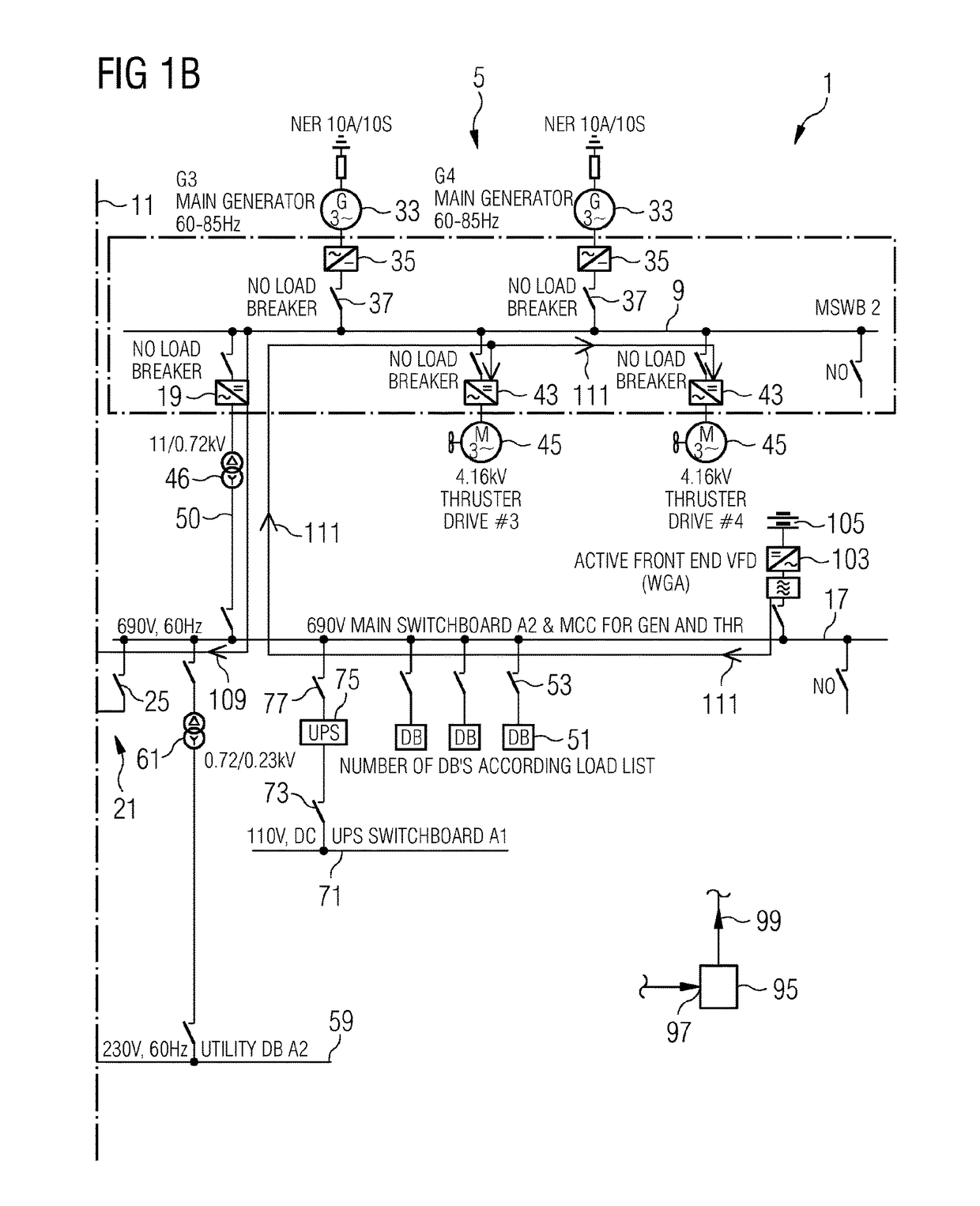Power distribution on a vessel
a technology for power distribution and vessels, applied in the direction of emergency power supply arrangements, vessel construction, marine propulsion, etc., can solve the problems of large equipment of voluminous space and also a considerable amount of cables, and the conventional power distribution system may have some disadvantages and technical problems, and achieve the effect of reducing the requirements regarding the size of the cabling, cost-effective, and large cabling siz
- Summary
- Abstract
- Description
- Claims
- Application Information
AI Technical Summary
Benefits of technology
Problems solved by technology
Method used
Image
Examples
Embodiment Construction
[0046]The schematic circuit diagram of the arrangement 1 for power distribution on a vessel illustrates a first system 3 and a second system 5 which share a number of features. The first system 3 comprises a first DC bus 7 which operates at a first medium voltage, in the illustrated example 6.0 kV DC. Similarly, the second system 5 comprises a second DC bus 9 which operates at a second medium voltage, for example between 5 kV and 10 kV DC. As is indicated in the FIGURE, the first DC bus 7 and the second DC bus 9 are separated by a barrier 11, they are independent from each other and / or are spaced apart from each other. Thus, there is no direct connection between the first DC bus 7 and the second DC bus 9.
[0047]The first system 3 further comprises a first AC bus 13 which operates at a low voltage, in the illustrated example 690 V, 60 Hz AC. A first inverter 15 is coupled between the first DC bus 7 and the first AC bus 13. The second system 5 comprises a second AC bus 17 which operate...
PUM
 Login to View More
Login to View More Abstract
Description
Claims
Application Information
 Login to View More
Login to View More - R&D
- Intellectual Property
- Life Sciences
- Materials
- Tech Scout
- Unparalleled Data Quality
- Higher Quality Content
- 60% Fewer Hallucinations
Browse by: Latest US Patents, China's latest patents, Technical Efficacy Thesaurus, Application Domain, Technology Topic, Popular Technical Reports.
© 2025 PatSnap. All rights reserved.Legal|Privacy policy|Modern Slavery Act Transparency Statement|Sitemap|About US| Contact US: help@patsnap.com



